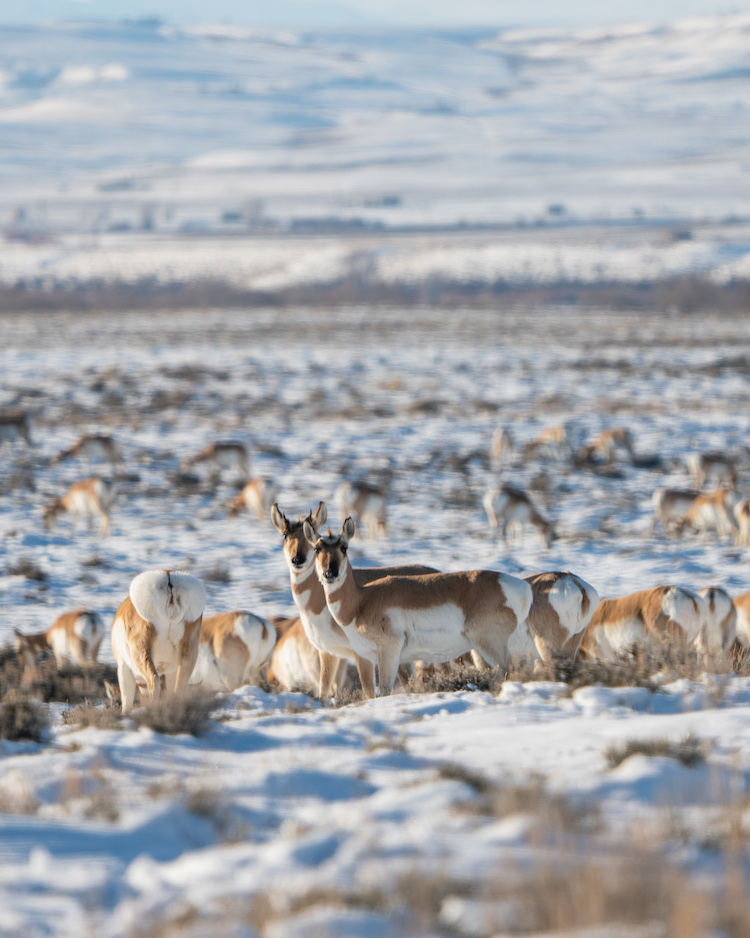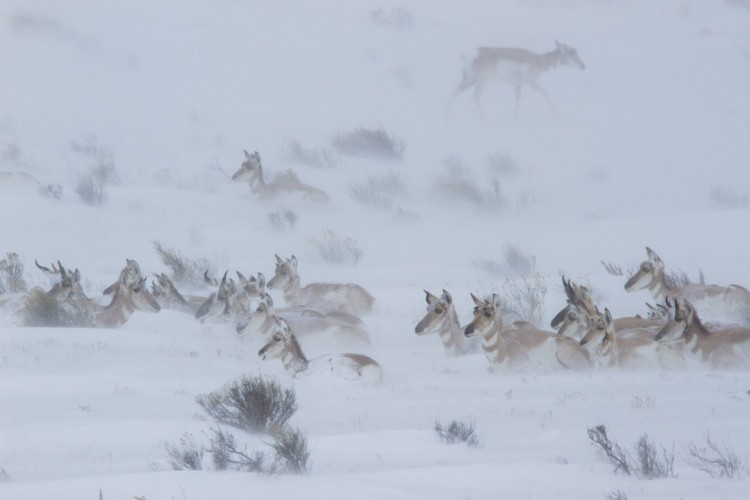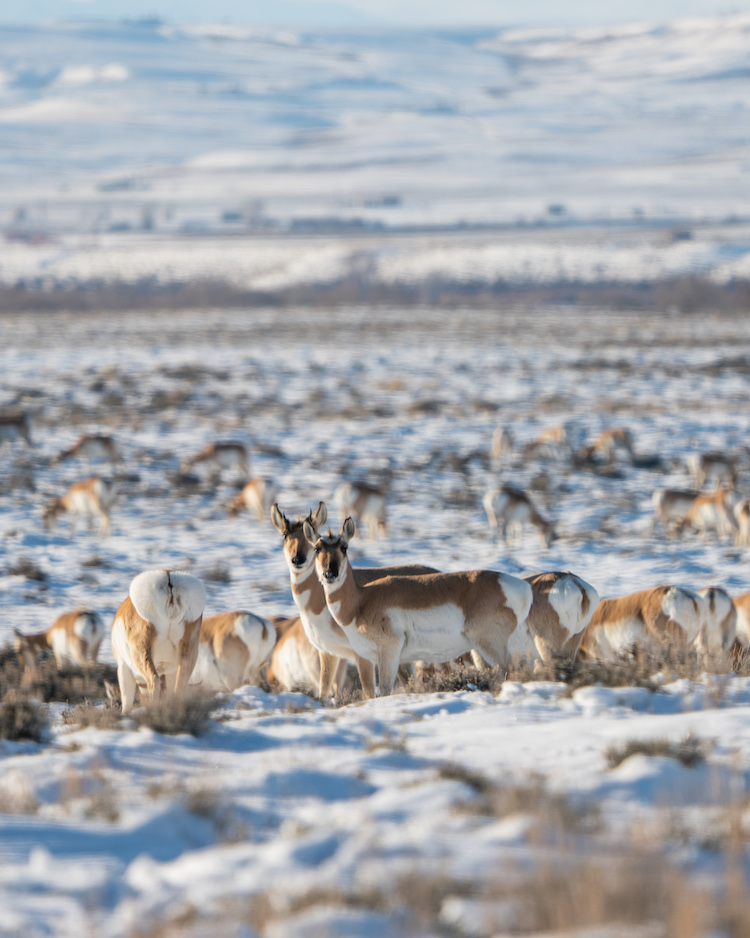Research Revealed: Pronghorn & winter mortality

Winter is a brutal season on any animal–yes, even humans, regardless of how many days we get out on skis!–and we tend to see higher wildlife mortalities during this time. Severity of winter conditions–air temperature, snow depth, drought conditions, and food availability–determine how severe these mortality rates will be.

Photo by Josh Metten.
North America’s fastest land mammal, the pronghorn antelope, has not been faring well this winter. Record snows have blanketed the western half of Wyoming, punctuated by only brief warming periods, then more cold. This combination is a brutal one, creating layers of ice on top of snow on top of ice that make accessing food all but impossible–and years of drought have led to less food being available in the first place.
In the winter, pronghorn eat mostly sagebrush, which is often buried beneath these layers of ice and snow. What’s more, pronghorn movement is limited; deep snowdrifts block fences and make both crawling under and jumping over nearly impossible. To add insult to injury, a little-understood bacteria called Mycoplasma bovis has been making its way through herds. It causes pneumonia in wildlife populations and is considered lethal once contracted by an animal.
At least 500 pronghorn have met this fate this winter alone, many of them from the herd that spends its summers in Grand Teton National Park–the Sublette herd. This herd of pronghorn overwinters in the Upper Green River basin, approximately 150 miles south of Jackson, WY. In the spring, a few hundred animals migrate into the national park.
In an average winter, biologists report a herd mortality rate of 20%. This winter, however, about half of the 83 GPS-collared female antelope from the Sublette herd have died.
Biologists haven’t seen die-offs this staggering since the winter of 2016-17, when extreme weather conditions made life all but impossible for Wyoming’s wildlife. However, wildlife officials said this winter has been more extreme, largely due to the cold.
Pinedale, WY, which is about halfway between the Sublette herd’s two seasonal homes, records an average of 39 days of subzero temperatures in a typical winter. This winter, however, the town has recorded 62 subzero days.
The colder the temperatures, the more energy animals need to perform basic bodily functions–maintaining body temperature, metabolizing food, keeping internal organs running–which consumes more body fat. The lower the fat reserves an animal has going into winter, the less likely it is to survive.

Photo by Josh Metten.
Wyoming Game and Fish biologists are looking to improve survival outcomes for pronghorn herds, which means ensuring the animals are able to build up enough body fat before winter’s arrival. For species such as elk, artificial feeding is usually the answer, but this method is not possible with pronghorn. They lack the gut bacteria required to digest hay or alfalfa, the two most common foods used in artificial feeding programs.
Instead, wildlife officials are aiming to improve migration corridors and maintain habitat, but this comes with its own litany of challenges. Roads, fences, subdivisions, and energy extraction (think: solar, wind, oil, and gas) all negatively impact wildlife migration. Protecting migration routes means numerous stakeholders must come together and agree to protect the land–a task that seems insurmountable.
Hunting quotas will likely be adjusted for the fall, as well, although officials are waiting to get a final population count–usually done from the air–before setting 2023 hunting regulations. With winter still going strong in Jackson Hole, it may be a while yet before we know the full extent of the season’s losses. We do know one thing, though: it has been record-breaking.













